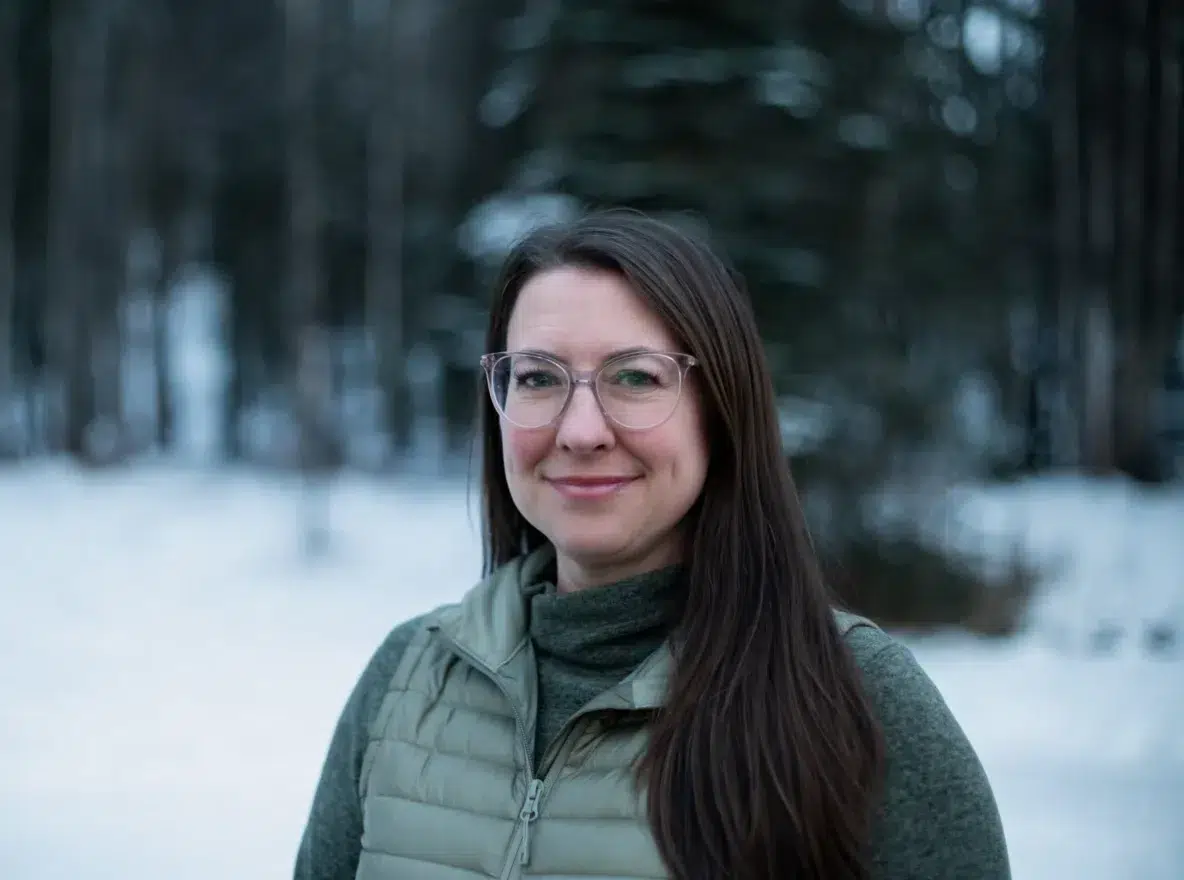Alaska Public Media | Interview by: Wesley Early | Photo by: Matt Faubion, Alaska Public Media
Published December 26, 2024
Last year, food banks across the country saw record high demand for their services, and in many communities, including Alaska, officials say the need is even higher this year. The Food Bank of Alaska works with roughly 150 partners in a state where about 1 in 8 people experience food insecurity.
Data is incomplete for 2024, but Food Bank of Alaska CEO Cara Durr says her organization has seen a rise in requests for food aid, and ran out of food during several community events this year. She says a major driver for the increased demand is the lack of federal resources that were available during the pandemic.
Below is the transcript of an interview with Durr on Alaska News Nightly. It has been lightly edited for length and clarity.
Cara Durr: Coming off of COVID, there were lots of resources available for people. So the need was certainly high in COVID, and everybody knew about it. But there were great programs available like enhanced SNAP benefits, free school meals for kids, child tax credits, things like that. So food insecurity rates actually declined during COVID, which was pretty incredible.
Wesley Early: So where are we at now?
CD: The need is still really, really high. Our partners continue to see more people than ever coming to their pantries, coming to their meal programs. We know that. You know that the high cost of living, inflation, things like that, have taken a toll on people, and they continue to demand our services.
WE: So on that topic, last year, some big drivers for the surge included a backlog on state food stamps and a decrease in federal programs. What have been the drivers this year?
CD: Well, we’ve certainly seen a lot of improvement with the SNAP backlog, of course. Not totally taken care of, people are still having some lags there, but by and large, much, much improved from before. I think it’s really just the continued high costs of inflation and other other things like housing. You know, for low income people, they’re spending a higher proportion of their income on those basic needs, like groceries, fuel, things like that, and so, we see a little bit of increase here and there, it’s felt more deeply by them.
WE: Last year, you were also reporting a declining trend in donations. Has that also persisted this year?
CD: It has. You know, this is our big giving season during the holiday. I think we are lagging a little bit behind in general on donations, both food and monetary donations, but we’re really hoping to make that up in the new year. We’ve got plans to enhance our food sourcing. Look at different ways of pulling food in and different options for grocery rescue. And of course, the public is incredibly generous with us, and the community has definitely shown up, and we hope they will continue to do so.
WE: So how about the amount of volunteers, has that amount gone up or down? Or is it pretty steady?
CD: Volunteers remain a pretty steady source of support for us. Sometimes we have more volunteers than we even have opportunities for, so that’s not a real area of need. But we definitely could not do what we do without the incredible support of our volunteers.
WE: So it’s the holiday season, a time where groups often come together. Large meals are pretty commonplace. Can you talk about how the food bank has been faring this season?
CD: Well, we just wrapped up our Thanksgiving Blessing meal distribution in Anchorage in the valley, and this was actually our 20th anniversary of that partnership with the faith-based community to serve fixings for a holiday meal. And this year, we saw more need than we’ve ever seen. You know, at the end of the day, we had sites shutting down because they ran out of food and had to either turn people away or redirect them to other services available, which, you know, fortunately there were some other options, but that never feels great. So we’re just doing the best we can to keep up with the demand.
WE: So it strikes me that last year there was a record high demand. This year it’s even higher, I guess, to people who are constantly hearing ‘the demand is up, the demand is up,’ what can be done about it?
CD: I think if we just look to COVID, we can see that we actually made gains in addressing food insecurity because we put resources and investment into that area. So programs like free school meals for all kids, enhanced SNAP benefits, child tax credits, these are some really key ways that we drove down food insecurity rates. So I think we need broader investments to the problem. Food banks and food pantries certainly play a critical role in addressing food insecurity, but we are not the whole solution we need. You know, it’s a public-private partnership, and so we need the state and the federal government to invest in the programs that they have and make sure that they’re strong and accessible to everyone.
WE: For members of the community listening who want to help, what would you suggest?
CD: Just get involved in some way. You know, certainly we have opportunities for volunteers, donations, things like that. But we have a network of great partners around the state, you know, partner food banks and other communities. And so just encourage you to reach out and either, you know, donate, volunteer, be an advocate, just get involved in some way. It really makes a big difference.

